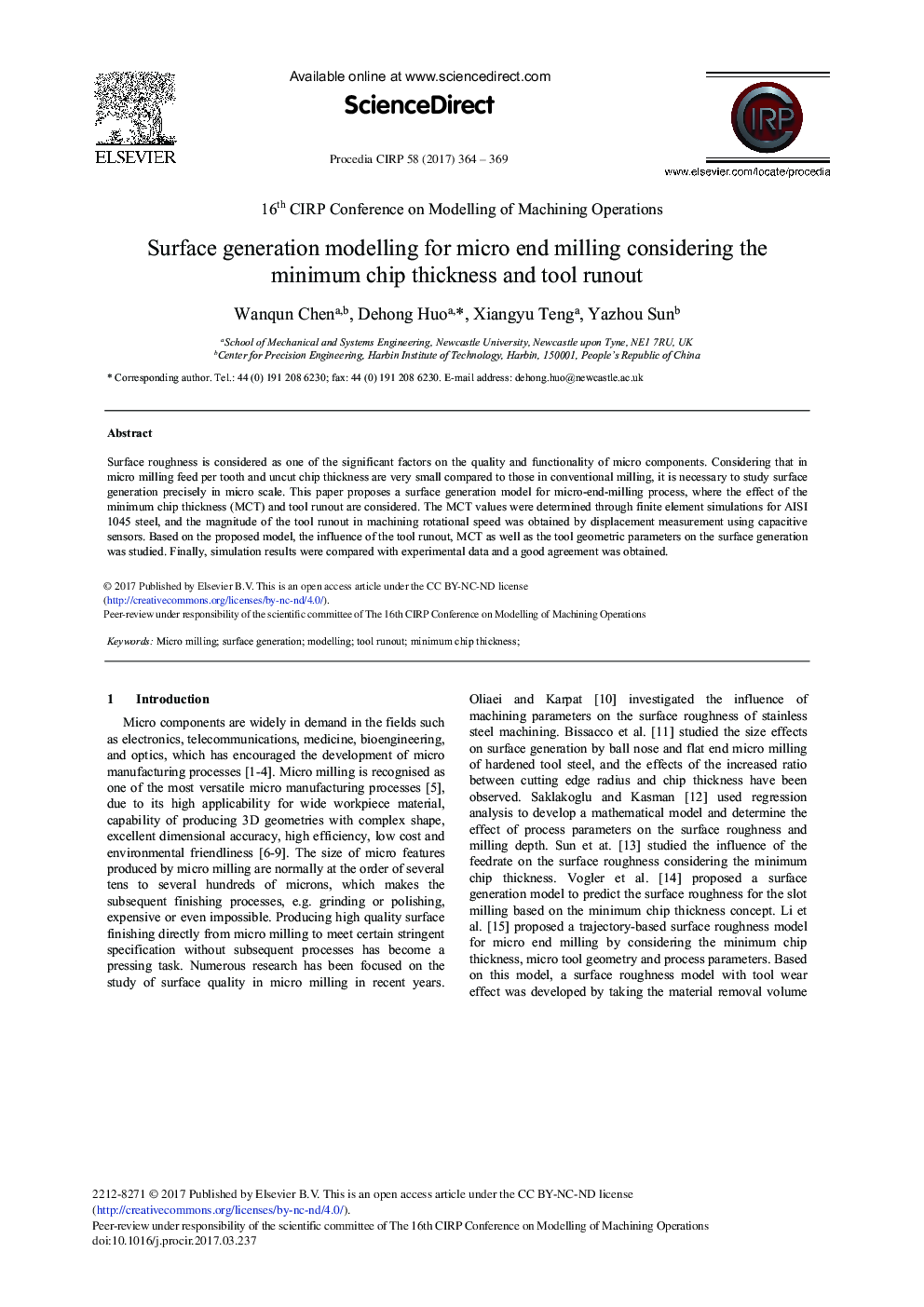| Article ID | Journal | Published Year | Pages | File Type |
|---|---|---|---|---|
| 5470278 | Procedia CIRP | 2017 | 6 Pages |
Abstract
Surface roughness is considered as one of the significant factors on the quality and functionality of micro components. Considering that in micro milling feed per tooth and uncut chip thickness are very small compared to those in conventional milling, it is necessary to study surface generation precisely in micro scale. This paper proposes a surface generation model for micro-end-milling process, where the effect of the minimum chip thickness (MCT) and tool runout are considered. The MCT values were determined through finite element simulations for AISI 1045 steel, and the magnitude of the tool runout in machining rotational speed was obtained by displacement measurement using capacitive sensors. Based on the proposed model, the influence of the tool runout, MCT as well as the tool geometric parameters on the surface generation was studied. Finally, simulation results were compared with experimental data and a good agreement was obtained.
Related Topics
Physical Sciences and Engineering
Engineering
Industrial and Manufacturing Engineering
Authors
Wanqun Chen, Dehong Huo, Xiangyu Teng, Yazhou Sun,
